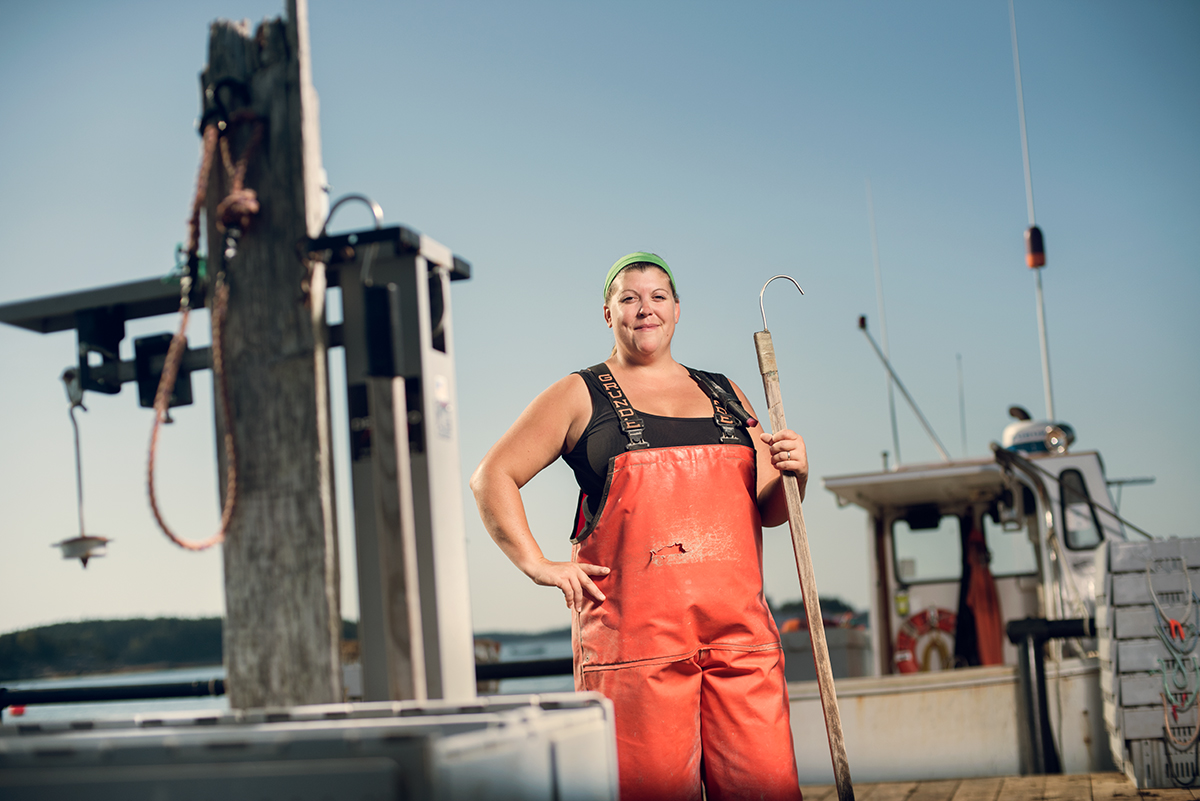
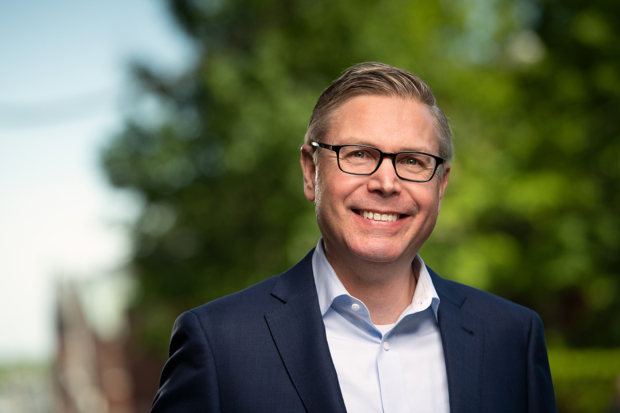
© Brian Fitzgerald
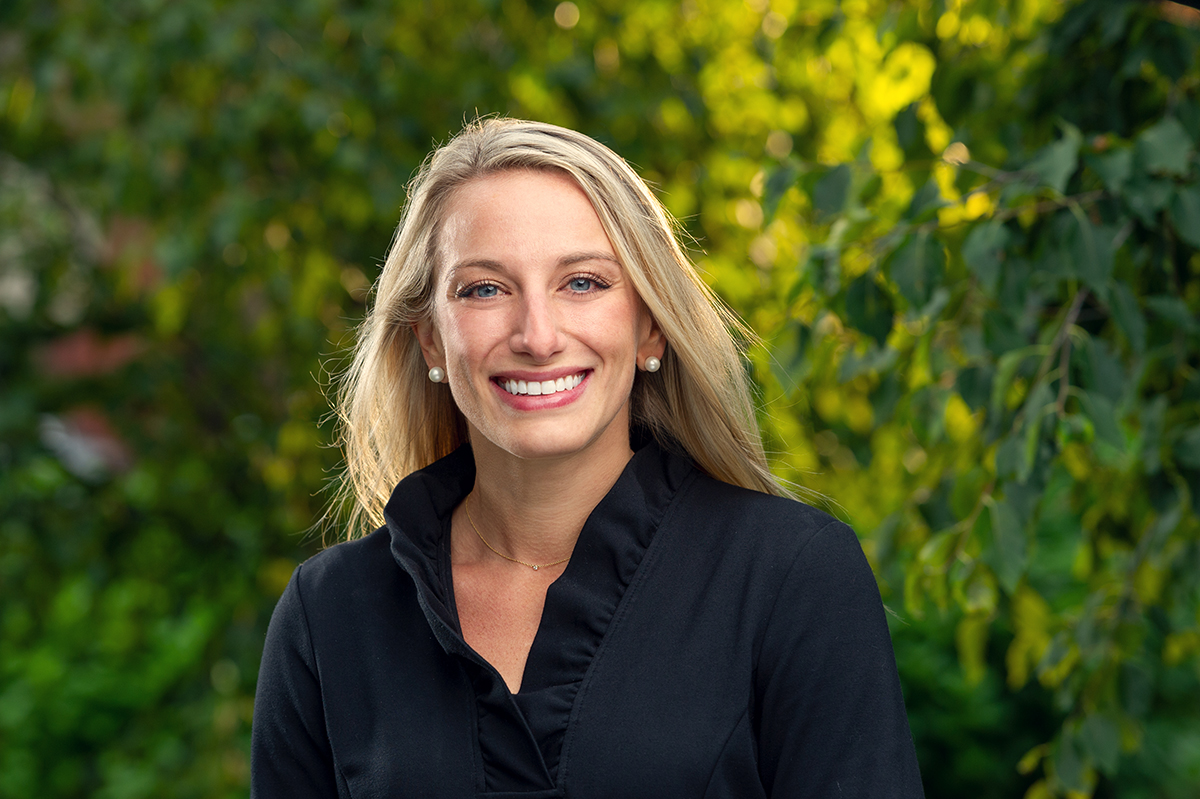




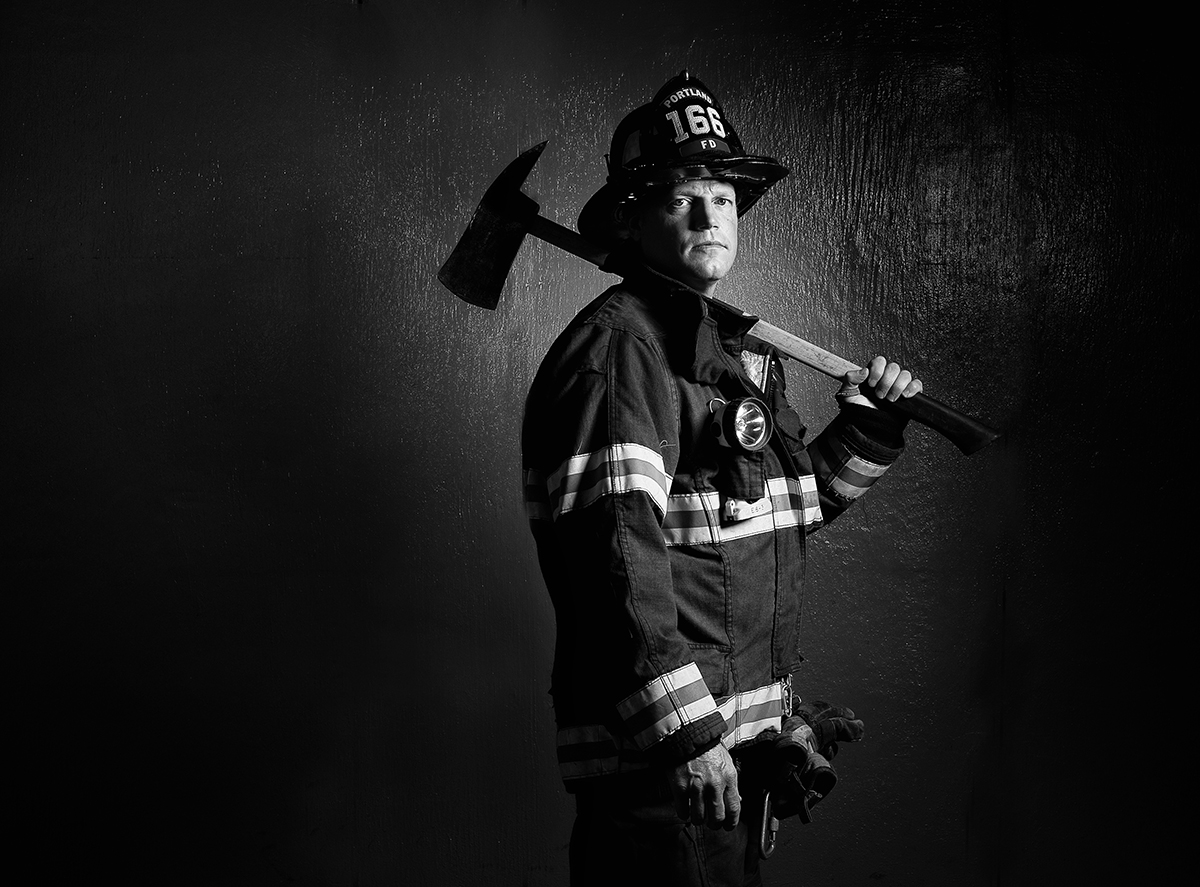
As a professional commercial photographer, my job is to protect my client’s images as well as their image. This entails safely archiving their digital files so they can found months or years after a shoot, but it also means that I safeguard how those images are used and who gains access to my clients’ images in the future.
Depending on my specific contracts and releases, I often have the legal right to reuse images for multiple purposes after they are first used. Aside from incorporating some of the images into my blog and portfolio, I almost never do so, especially if the images were taken on assignment for a client (rather than taken as part of a self-assigned project). Why? Because once I photograph someone, I take on the responsibility—sometimes legally, always ethically—to safeguard their images so they aren’t used in ways my clients wouldn’t be comfortable with.
The most obvious example might involving selling images I’d taken for a corporate client as ‘stock’ images through a stock agency like Getty. Imagine my client’s surprise when they see a billboard advertising a competitor across town using an image of their staff or clients that they paid me to take a year before. In very short order, I’d be looking for another line of work.
The number one job of a professional photographer is to serve our clients and their interests first, not our own. In effect, we’re a member of their team and need to be careful to make sure their images are not used in off-brand or unapproved ways.
A less obvious example occurred this past April. It appeared in the form of an email sent by a photographer agency to its member photographers including me, requesting we submit gritty portraits of workers on the front lines of the pandemic: rescue personnel, healthcare providers, delivery drivers and others. A national (and unnamed) insurance agency wanted to use these images in a 6 month national ad campaign. They’d pay $3000 per image used, split evenly between photographer and the agency.
I considered the request. I have a large library of images of front line workers, mostly created not for clients but as part of personal editorial projects. Technically, I have the copyright and releases allowing me to reuse and resell these images. Back in April, with the pandemic shut-downs in full swing and uncertainty about future income, it was a tempting offer.
I could imagine the result of the campaign—a video depicting grave-faced police officers, firemen and nurses with a dramatic voiceover and swelling background music. At the end, the logo of some national insurance company would appear, and the unwritten message would be: we want to associate our brand with these popular heroes so you’ll think we’re special too.
Then I imagined the surprise of my portrait subjects in seeing their image being used to shill for a company that they’ve never heard of for a service they’ve never received. I thought of them, essentially being used to confer their heroic status to a large insurance company that doesn’t care about them personally but just want them for the uniforms they wear and the trust they confer.
I declined to participate. Just because I can legally do something doesn’t mean that I should. Whether a paying client or not, anyone who ends up in front of my camera are relying on me to protect their single most valuable asset—their image—and make good choices on their behalf.
I can’t judge photographers who chose to participate, either because of their financial situation or due to agreements negotiated between them and their subjects beforehand.
This anecdote highlight the importance of having discussions about future image use between photographers and their clients and subjects, with clear expectations written into a contract. In absence of such an explicit agreement, photographers should always remember that image, and reputation, is worth more than a quick hit of cash. Protect your brand and your images and make sure your photographer does, too.
–30–
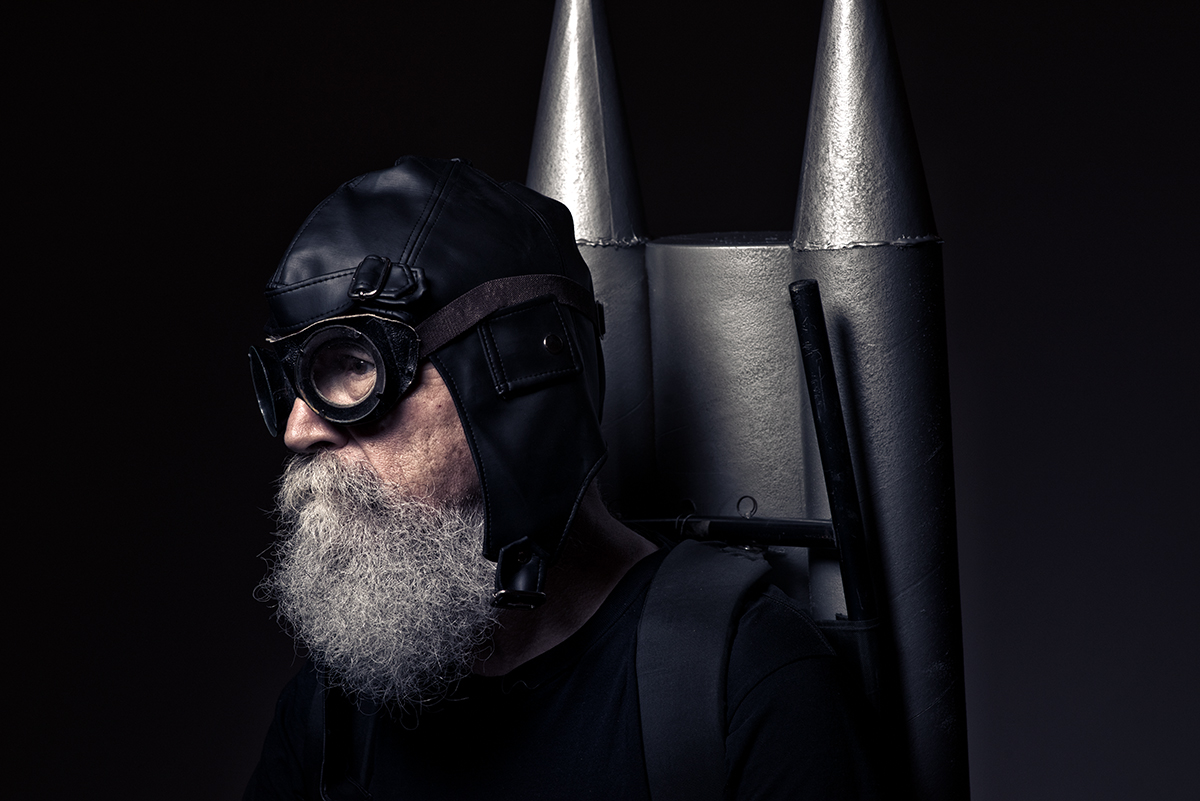
The past three months of constraint and restraint have underscored how important it is to a have a deep content library. My clients have been unable to commission new shoots due to the pandemic, but for those with a deep image library it isn’t a problem. We’ve gone back over their images and realized that many are still usable and relevant.
That brings up another issue: storage and archiving of your image library and other digital assets. If you had to access images and videos taken months or years ago, would you be able to find them easily….or at all?
I’ve written before about how important it is to archive your images and other digital assets. For most brands, their image and video libraries–compiled through time-consuming and costly shoots, purchases of stock assets, and contributions by staff–represents a huge value and investment in time and money.
Yet, they don’t have a central area where these images are stored. Their assets are spread out over multiple local computers and perhaps online, making them far less useful. If they are in one place, that one place is often a single computer or drive with no backup, no redundancy and no options in case of drive failure.
As certain as the sun rising tomorrow, your computer drives will fail. I recommend all of my clients have at least one extra copy of their digital assets that everyone in their organization has access to.
Several times a year, clients email me with requests to locate images taken in the past—some more than a decade ago—that they’ve misplaced or lost. No problem, I tell them. I’ve got it.
Our simple policy is the 3-2-1 backup rule evangelized by Peter Krough, digital asset management “DAM” guru to protect against any failure scenario: Store at least three copies of your data using at least two different types of storage media with one of them located ‘offsite’, or off premises.
We store a minimum of 3 copies of all digital files, whether it’s the original, raw, unprocessed images taken with the camera or the final ‘derivative’ versions delivered to our clients and pressed into use. One is stored on local external drives. Another is backed up to external drives located offsite. The third is stored on the cloud (which has its own redundant backup). For the ‘final’ delivered images, I also store these in a fourth location: an online digital archive that I can give clients direct access to as needed. Some of my clients depend on this digital archive as one of their copies.
So if you work with a professional photographer, ask them about their archiving procedures and standards. They should be able to clearly explain what happens to your images, how they are backed up and protected, and if you ever need to retrieve images you’ve lost, they will be able to quickly provide you with copies of the originals.
–30–
Over the past month, we’ve been busy here at the studio preparing for a safe and responsible return to business. I can’t predict what’s going to happen in the foreseeable future, but it’s clear that COVID-19 will continue to impact our families, our clients and our daily life in ways small and large.
As Maine enters the second phase of business reopenings, we’ve posted our COVID plan along with a Q&A section on our website. In the plan we detail the efforts we’re taking per state and federal guidelines to mitigate any spread of the Coronavirus as we take on limited shoots here at the studio and on location.
We’re also working with clients in other ways, from utilizing their existing imagery where possible, to scheduling shoots outdoors and even doing planning, production and image review sessions virtually. I will expand in future blog posts on how some of these new processes and workflows work for us and how they could be adapted for use by our clients and others.
Please read more about our COVID-19 plan here. Continue to stay safe.
–30–
I’m fortunate that I get to meet a lot of very interesting and very cool people in the course of my daily work as a commercial photographer in Maine. Every person has their own unique story and are fascinating in their own special way.
Some just happen to work in environments that take ‘interesting’ to another level. The Portland Boxing Club, a 1900s-era former wood-drying kiln set tucked behind Morrell’s Corner in Portland, is one such place. It’s there, enclosed by thick brick walls and floors of concrete, sweltering in the summer and freezing in winter, that Head Coach and owner Bob Russo has honed fighters of all ages and sexes for almost 30 years. On concrete and on the canvas, they strengthen their bodies and toughen their minds.
I’m excited to release this short video profile of Coach Russo. This was originally done as part of a larger piece on the gym for Inspire Maine several years ago but edited recently. Enjoy!
As we await the reopening of services, businesses and schools, I’m passing along five great resources that fellow photographers, creatives and others might find useful. Many of these listed below are free during this timeframe and will hopefully help you weather the storm.
1) Yale Science of Wellbeing course
Looking to be happier and more productive? This is a great course offered free by one of the world’s premiere universities.
2) Covid-19 Freelance Artist Resource
From playwrights to visual artists, composers to stage managers, actors to art patrons, there is something here for you in this list of mostly free opportunities to support your art (or your artist).
3) 198 Free tools to help you through the pandemic (Entrepreneur.com)
We’ve all heard of Zoom by now…but there are 197 other tools on this list you may not be aware of and should.
4)Covid Resources for Photographers
This comprehensive list of ideas, resources, and initiatives from lenscultures is meant to support the global photography community. Check it out or forward it to a photographer you know.
5) Pixel computer glasses
Last but not least, something to ease the strain of looking at a screen for hours-long Zoom calls (not free, but a nice discount)
–30–
We hear so much these days about the ‘pivot’. Faced with unprecedented health and economic crises, small businesses and freelancers are hunkering down to weather the storm. Many are panicking, understandably. Those who can are using the opportunity to shift their focus to the things they can do: becoming more useful, more disciplined and more prepared to safely get back to work when it’s time to do so.
I’m most grateful that I’m healthy and that my very large, far-flung family is as well. Number one priority for me has been to stay healthy and to keep my business healthy as possible.
I’ve had more family time than I’m used to, and it’s been both challenging and rewarding. My daughter Maggie is 13 and in seventh grade. She’s not the World’s Biggest Fan of online learning and misses her friends, but by now she’s turned into a bit of a corporate lawyer: from waking up at 5:30 to get work done before her school day starts, to pausing her earbuds, forefinger raised, to tell her parents that “I’ve got back to back Zooms from 9:30 to noon; I’ll catch up with you for lunch before my 1 o’clock.”
I’ve been using my time to brush up on skills—taking a handwriting course, of all things, and studying Russian again—and to work on new ones, like shooting video and editing in Premiere Pro. That’s been fun and I’ll have more work to show soon.
It’s also been a welcome opportunity to re-edit my work and website. I’m embarrassed to say how long it’s been since my last major website portfolio update, but it’s not for lack of new work. Finally I’m incorporating personal and client images from the past couple of years and can’t wait to reveal those soon. As I refocus my marketing and other business systems, I’m streamlining things to make my workflows easier and my client experience better.
My studio is clean, organized and prepped for reopening. I’ve even done a few no-contact and social-distancing client shoots this week, following the state guidelines as service businesses like mine reopen.
In this time of social distancing, the most surprising and unexpected benefit has been connecting (and reconnecting) with friends and family sadly too long neglected (by me, usually, not by them): a high school friend now serving in the Navy in Spain (a nurse, no less); my octogenarian Uncle Michael in Washington State who proudly wears a ponytail; former newspaper colleagues around the country. I love Virtual Happy Hours….a bit too much. I’ve learned not to schedule more than two of these in a weekend.
In April, I helped to form a group of fellow creatives located around the world. We meet weekly to discuss marketing, how to elevate our work and our value, and to hold each other accountable. The group includes a photographer from Montreal; a Florida filmmaker; a podcaster and a designer, both from Portugal; a Budapest furniture designer and a German copywriter. After just one month, it’s become a hugely valuable part of my week and one positive outcome of this strange time that I plan to continue long after the pandemic ends.
I’ve realized that just because the world slows down, there is work to be done: maintaining health, relationships, and working hard to pivot your business, your career and your skills. I’m adjusting my hustle, though more work needs to be done.
Now if I can just wean myself off of these happy hours, I think I’ll be in good shape.
–30–
Dove Tail Bats by Fitzgerald Photo
During the past two months I’ve been busy with ongoing projects, especially with video production of work I started before the stay-at-home orders shut things down.
I love the impact of the still image and it’s my primary way of telling stories visually. Often, a crafted campaign built on remarkable still imagery is the most effective and impactful way to tell a story. Other times, a single still image alone isn’t sufficient and that’s when I turn, increasingly, to video storytelling.
I’m excited to release a new video showing Dove Tail Bats founder Paul Lancisi in his manufacturing facility in Shirley Mills, ME. This was part of a photo assignment for Down East Magazine. While I love the portraits I produced for the magazine, I decided to incorporate video as well because it better conveyed the processes that make Dove Tail Bats so special.
I love how Lancisi pivoted from a woodworking business to one that embraces his lifelong passion for baseball. What he and his wife Theresa have created is amazing: a Maine company that crafts beautiful, one-of-a-kind baseball bats sought after by major league hitters and top college athletes. The bats might look great hung on a wall above the fireplace, but—just like Dove Tail Bats—are destined for greater things.
It’s inspiring to be able to show Maine companies doing such remarkable work and and achieving great success far outside of our state.
–30–
Ready to level up your storytelling content with photography, videography and multimedia? Contact Fitzgerald Photo to see if we’re a good fit for your brand or project.
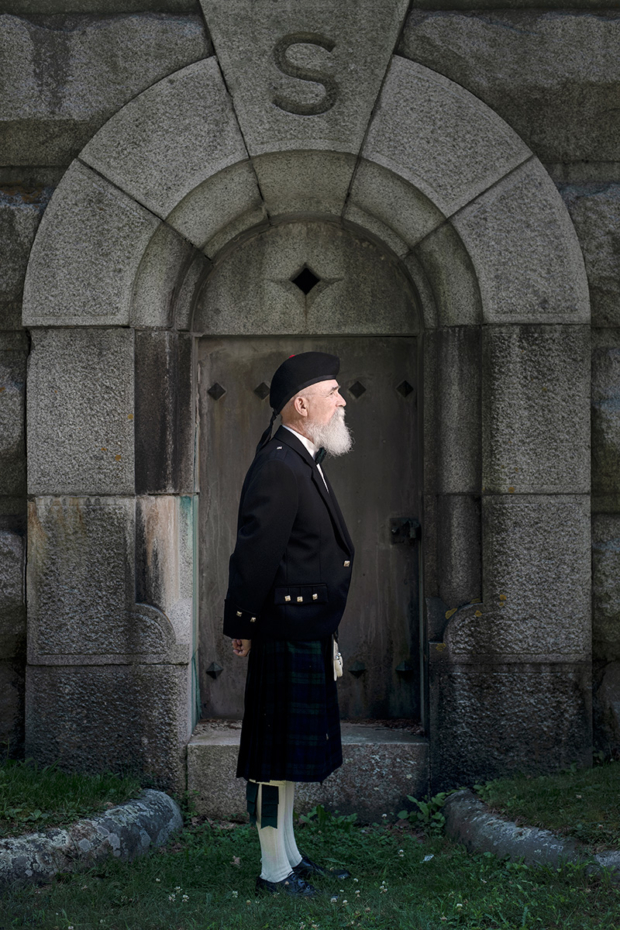
I’ve always been obsessed with creating various lists. Nothing, it seems, feels better than to tick items off my to-do list as I march towards….what? Usually, more to-do lists.
Sometimes I’ll add an item that I’ve already completed, just for the little dopamine rush of checking it off. Some of you know what I’m talking about.
The Pareto Principle, also known as the 80/20 Rule, posits that 20 percent of our activities generate 80 percent of the results. On your to-do list of 100 items, less than 20 will actually move the needle, propel you forward, impact your life and give you the majority of the positive results you want.
In short, most of what we do isn’t important at all. It may feel good to check things off a list, but we’re losing sight of what is really important. A million such activities would get us nowhere but does result in lives consumed with busywork. The pandemic has highlighted this for many of us. Much of what we felt was important no longer seems that important. Much of what we used to do, we can no longer do.
So as we slowly start to go back to “normal” work in the next weeks and months my goal is to apply this 80/20 framework to my life and to my work. To fight against the busywork, by delegating or eliminating it altother. To instead do more of the things that I enjoy: building relationships, doing creatively fulfilling work, and contributing positively to my family and community.
–30–
This is a time of uncertainty, pain and upheaval. It’s a time of distrust and disinformation on a massive scale, enabled by the easy and instant distribution of social media.
It’s also a time of amazing, heartbreaking and heroic stories.
Last week I got a letter from my friend Eric. He’s a Navy nurse stationed in Spain, one of the areas in Europe hardest-hit by the Coronavirus. He described long hours, uncertainty and even gratitude that he and his family are healthy even while he’s on the front lines of the fight against this disease.
I thanked him for sharing his story with me and wished others could hear it too.
My neice is an ICU nurse in Washington, D.C. I have friends and other family members who are in healthcare. Some of them have also had to deal directly with Covid-19 in their own homes.
We hear these stories, usually second- and third-hand, but more people should hear and see them.
Another friend, Scott, a Chinese medicine practitioner and acupuncturist in Washington State (another Covid hotspot) is dealing with the issue as well. His staff voted to remain open to help patients with critical needs during the pandemic, though most clinics have closed, and he’s using savings to keep his staff on payroll.
Many can relate to these stories, directly or indirectly. But what we can’t do—what we aren’t seeing enough, I think—are the stories of the lives of people on the front lines of this pandemic, both patients and healthcare workers. For safety, logistic and privacy reasons, it’s hard to do. Not impossible, but complicated.
Yet, it’s what we need to be seeing more of. Doctors and patients are behind the curtain—-and we can’t see the battles they encounter nor the significant successes, either. The same is true with other front-line workers, from police officers to rescue personnel to postal workers.
Seeing the real impact on the lives of these people would help everyone to see the costs of the pandemic. We’d see that we all are in this together.
Months from now, when we look back on this time, I hope we have documented these stories. They will remind us of our capacity for solving big problems, and ultimately healing, together.
–30–